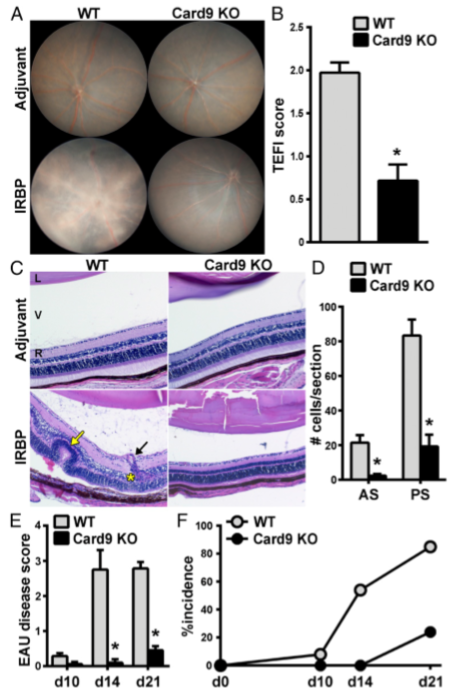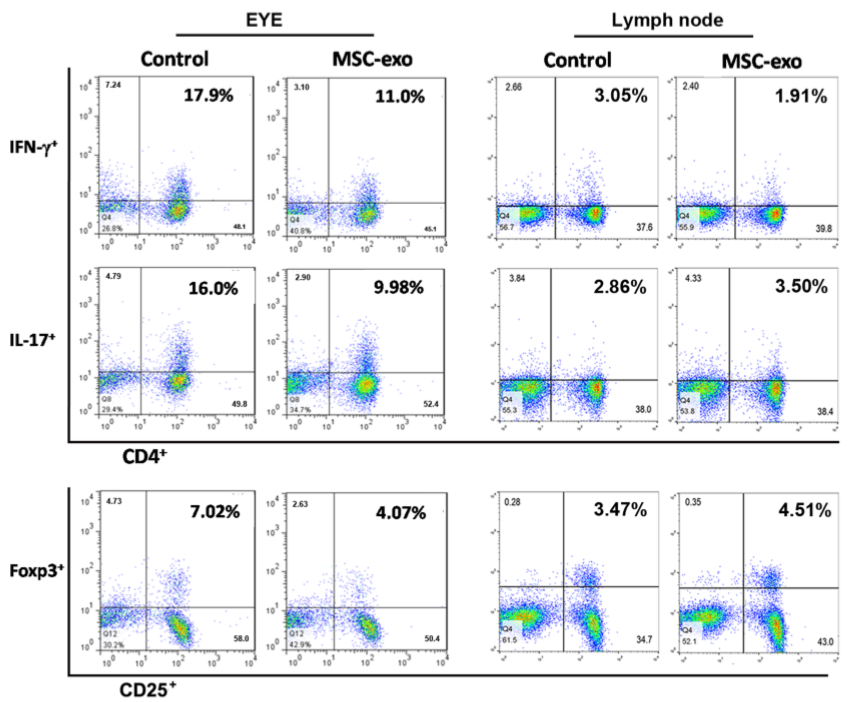Experimental Autoimmune Uveitis (EAU)
Uveitis is an inflammatory disease that occurs mainly in uveal tissue, including iris, ciliary body, and choroid. Anatomically, it could happen in multiple regions including anterior, intermediate, posterior and panuveitis. It is reported that uveitis may eventually lead to severe vision loss and blindness. At present, autoimmune uveitis is estimated to account for approximately 20% of blindness in the developed countries and 25% in the developing countries. EAU is a well-characterized model that mimics several characteristics of uveitis in humans. It can be induced in rodents by immunization with retinal antigens such as retinal soluble antigen (S-Ag). So far, Creative Bioarray has developed the model of experimental autoimmune uveitis in mice and rats. Additionally, this model is used in genetically manipulated mice.
Creative Bioarray has many years of experience in the field of uveitis and provides pharmacodynamic services for customers to help them study basic mechanism of uveitis and evaluate novel immunotherapeutic against uveitis.
Application
- Posterior and panuveitis
Our Capabilities
- We evaluate the severity of uveitis using clinical score system.
- We assess the eye lesions by fundoscopy.
- We isolate and identify T cell subsets from eye or other organs via FACS.
Assays Available
- Histopathological evaluation
- Protein concentration in the aqueous humor
- Mediator concentration (prostaglandin, leukotriene, etc.)
- Fundoscopy
- FACS analysis
With extensive experience in the field of uveitis, we are confident to help you to overcome any upcoming challenges. Our experts are fully capable of customizing our protocols and assays to meet your specific needs. With our help, we wish to facilitate your research with high efficiency.
Study Examples
 Figure. 1. Card9 is required for the inflammatory pathology in EAU. EAU was induced in WT and Card9 KO mice, and the onset and severity of uveitis were evaluated by clinical fundoscopy examination (A and B) and histopathology (C-E). (A) Representative fundus images of the posterior pole showing extensive inflammation (e.g., diffuse retinal lesions and vascular cuffing) in WT compared with Card9 KO eyes. (B) Clinical severity of retinal inflammation evaluated by fundoscopy. (C) H&E-stained sections of eye harvested on day 21 postimmunization (i.e., peak of disease) show pathological features within this disease including retinal folding (yellow arrow), granulomatous formation (yellow asterisk), and vasculitis (black arrow). Images acquired at 200 × magnification. (D) Quantification from histological sections of the number of cells infiltrated into the anterior and posterior segments. EAU disease was graded pathologically as a function of time (E) and used to calculate incidence over time (F).
Figure. 1. Card9 is required for the inflammatory pathology in EAU. EAU was induced in WT and Card9 KO mice, and the onset and severity of uveitis were evaluated by clinical fundoscopy examination (A and B) and histopathology (C-E). (A) Representative fundus images of the posterior pole showing extensive inflammation (e.g., diffuse retinal lesions and vascular cuffing) in WT compared with Card9 KO eyes. (B) Clinical severity of retinal inflammation evaluated by fundoscopy. (C) H&E-stained sections of eye harvested on day 21 postimmunization (i.e., peak of disease) show pathological features within this disease including retinal folding (yellow arrow), granulomatous formation (yellow asterisk), and vasculitis (black arrow). Images acquired at 200 × magnification. (D) Quantification from histological sections of the number of cells infiltrated into the anterior and posterior segments. EAU disease was graded pathologically as a function of time (E) and used to calculate incidence over time (F).
 Figure. 2. Analysis of T cell subsets from eye and lymph node.
Figure. 2. Analysis of T cell subsets from eye and lymph node.
Quotation and ordering
If you have any special needs or questions regarding our services, please feel free to contact us. We look forward to cooperating with you in the future.
References
- Lee E J, Brown B R , Vance E E , et al. Mincle Activation and the Syk/Card9 Signaling Axis Are Central to the Development of Autoimmune Disease of the Eye[J]. The Journal of Immunology, 2016 Apr 1;196(7):3148-58.
- Bai L, Shao H , et al. Effects of Mesenchymal Stem Cell-Derived Exosomes on Experimental Autoimmune Uveitis[J]. Scientific Reports, 2017, 7(1):4323.